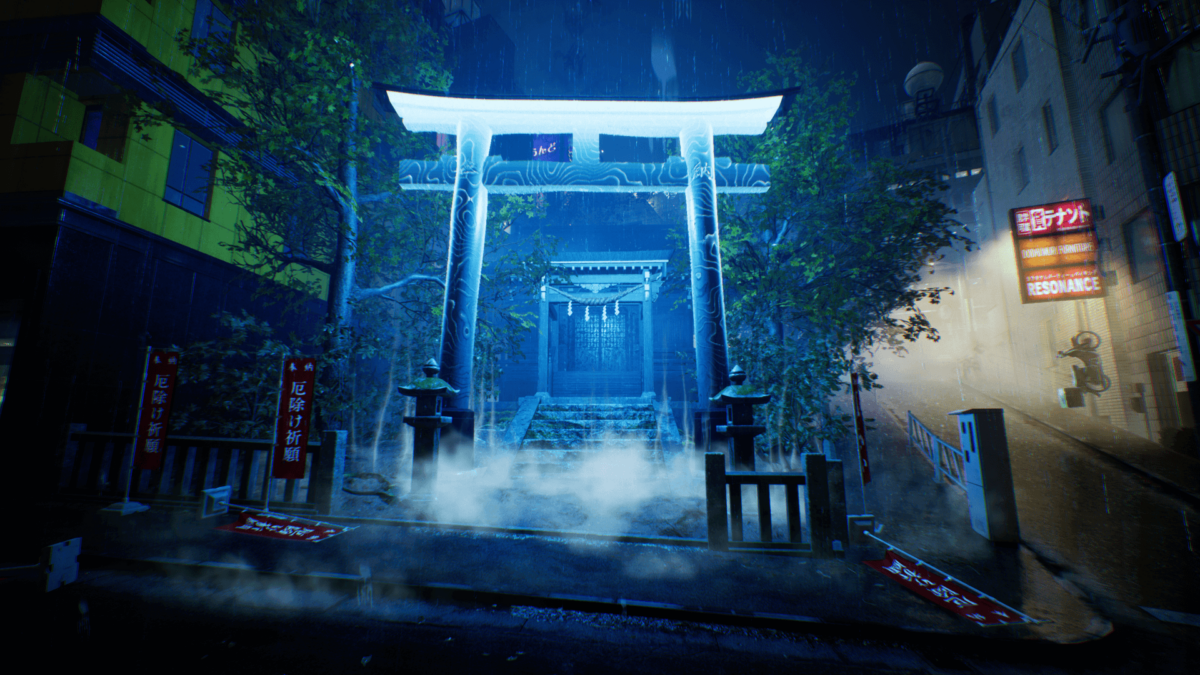Third-Party is a series of guest blogs where developers talk about specific games, mechanics, levels, and more. This week we have Andrew Haining, code lead at developer No Code, creator of Observation, chatting about pacing and influences in Ghostwire Tokyo.
I don’t consider myself an expert on Japanese culture or games, but I am a big fan of Shinji Mikami and Tango Gameworks. I’ve always considered the studio’s games critically and commercially underappreciated, so I was planning on playing Ghostwire Tokyo regardless of how well it was reviewed. My experience so far is that they have made a very good game and pushed new boundaries for the studio to hone their abilities. I expect whatever comes next to be even better still.
[mm-video type=video id=01fyp52y7w2kw515g8ph playlist_id=none player_id=none image=https://images2.minutemediacdn.com/image/upload/video/thumbnail/mmplus/01fyp52y7w2kw515g8ph/01fyp52y7w2kw515g8ph-65bada670334e96c3962a22783afd078.jpg]
I have the impression that following the outstanding critical success and comparatively disappointing sales in 2016-17, Bethesda decided to pivot its games away, slightly, from genres and styles that garner critical praise and towards ideas that tend to sell better. This is speculation, of course – I’ve no idea what is going on inside these studios – but there’s a definite trend with Fallout 76, Wolfenstein: Youngblood, Deathloop, and Redfall. Traditionally, the developers of these games made single-player experiences, but here they are experimenting with multiplayer.
To their credit, these were all far more successful than other companies’ hamfisted attempts to bolt multiplayer onto single-player games ten years prior. I suspect because it was more of a gentle prod than a mandate, which gave developers the freedom to figure out how the games that they make could be made more mass market. This theory is speculative but I think it holds and I think that Tango, unlike the other studios, came to the conclusion that multiplayer just did not fit its games.

It’s also clear from interviews that Mikami is looking to move his career into a new stage in a way that is both satisfying to him creatively and protects the futures of all the people who depend on him, initially passing the reins to Ikumi Nakamura who directed the game through the first half of its development. From my perspective, she left a huge mark on the game’s development. I think, given recent statements from Mikami about directing one more game, he doesn’t believe he has managed to find a way to do this yet and that maybe he doesn’t consider Ghostwire to be entirely successful.
Something that’s interesting about both directors of this game is that they both have an art background, and this comes across in the end product. There’s a strong sense of visual style and that carries it a long way, but I think as a result of the many competing influences – the two directors, Mikami’s legacy, and the gentle prod from the publisher – the mechanics of the game feel like they’ve been refined over and over.

In my opinion, one of the most important jobs a director has is in communicating a strong vision of what the game is to the rest of the team. I have a pet theory, for example, that the reason Kojima is so successful at marrying his narrative themes to his mechanics is because his writing is so childish that it’s impossible for the team to get too far away from the thematic context of characters called Porter Bridges or Quiet.
My initial impression of Ghostwire Tokyo was very strong. The opening hospital section of the game had me thinking that Tango had decided to make a first-person stealth horror game inspired by Alien Isolation, and I was excited at the prospect of sneaking around these intriguing creatures conjured from Japanese urban legend. That section, however, didn’t last long at all before transitioning again into a game that felt inspired by Arkane’s (developer of Dishonored) stealth combat forte, and there were clear influences from Doom 2016’s unique combat design. As I played further it evolved into a Ubisoft map janitor game, while still preserving all these elements from all these other games. Along the way, you notice influences from Crackdown and Devil May Cry as well. I don’t think I’ve ever played such a melting pot of ideas before.

This is a game that has a lot to recommend. It reminds me of the first Assassin’s Creed game, like a first pass. It’s impossible to know what will come next and I suspect it won’t be a sequel, but if they did make a sequel it would start from a very strong place. They have the potential to make something exceptional.
One of the most difficult things in game development, to my mind, is pacing. Unlike the film industry where they tend to film lots of stuff and then perfect the pacing in the editing suite, games do not have that luxury. We can’t just cut sections of games out, move them around, go back into production and make some more as they do with reshoots in film. With games, you need to be constantly monitoring pacing during production and editing on the fly. This is a very difficult thing to do at the best of times, and it doesn’t work at all well with the concept of a schedule. If you’re not careful, these decisions can cause development to drag on.

No one wants to work on the same game for seven years and everyone likes to see their work come out. Not all genres lend themselves easily to this idea. It’s probably most pronounced in the open-world genre, and Tango hasn’t quite succeeded here. In this game, the player should be progressing their skill tree and moving the narrative forward frequently enough to keep them engaged. Tango comes close to nailing that, but the map janitor stuff is slightly too dense and traversal is not quite as engaging as a pure open-world game. Combat is the other major component of the open world and it also doesn’t have the depth of the games it riffs off. The real strength of this game is in its visual design and narrative set pieces, but it blows them all early instead of pacing them throughout the experience.
Modern Western game development is in an age of slavishness to realism. This can often have a negative impact on a game, most notably in the reception to Red Dead Redemption 2, where there were frequent complaints about it being slow because every action the player took needed to be acted out in painstaking detail. There have been times when the trend was inverted. For example, first-person shooters tend to get faster and faster because of a tendency in players to equate being powerful in a world with the quality of the game. This, of course, leads to a power singularity of boring game design and needs to be resisted.

Finding the balance is key. Excessive dependence on animation can have a negative impact on a designer’s ability to iterate and it has an impact on the pacing of the experience. No breaks in player input can lead to a breakneck pace like StarCraft, where success is literally measured in clicks. The right balance depends on the experience you are trying to evoke and the need to iterate to find something you’re happy with. I believe that the recent Japanese zeitgeist of deliberately moving first-person games away from realistic animations in favor of simpler, faster, non-literal movements is a very good piece of design, and Ghostwire has found an excellent place on the spectrum where they do not impact immersion detrimentally at all and they keep the player experience at just the right pace that suits the game.
With Ghostwire Tokyo, I feel Bethesda’s era of pop hit chasing has most likely come to an end. Redfall was clearly started in this era, but I expect Microsoft will pivot the studios away from this model back towards the prestige games they made their name with. Those are the types of games that sell game passes, lots of high-quality 30-hour games, not 500-hour multiplayer ones. I doubt Bethesda got what it was looking for from any of the games released in this era. Whatever direction its studios head in next, I’m certain it will be interesting and high quality.
Written by Andrew Haining on behalf of GLHF.
[listicle id=1862887]









